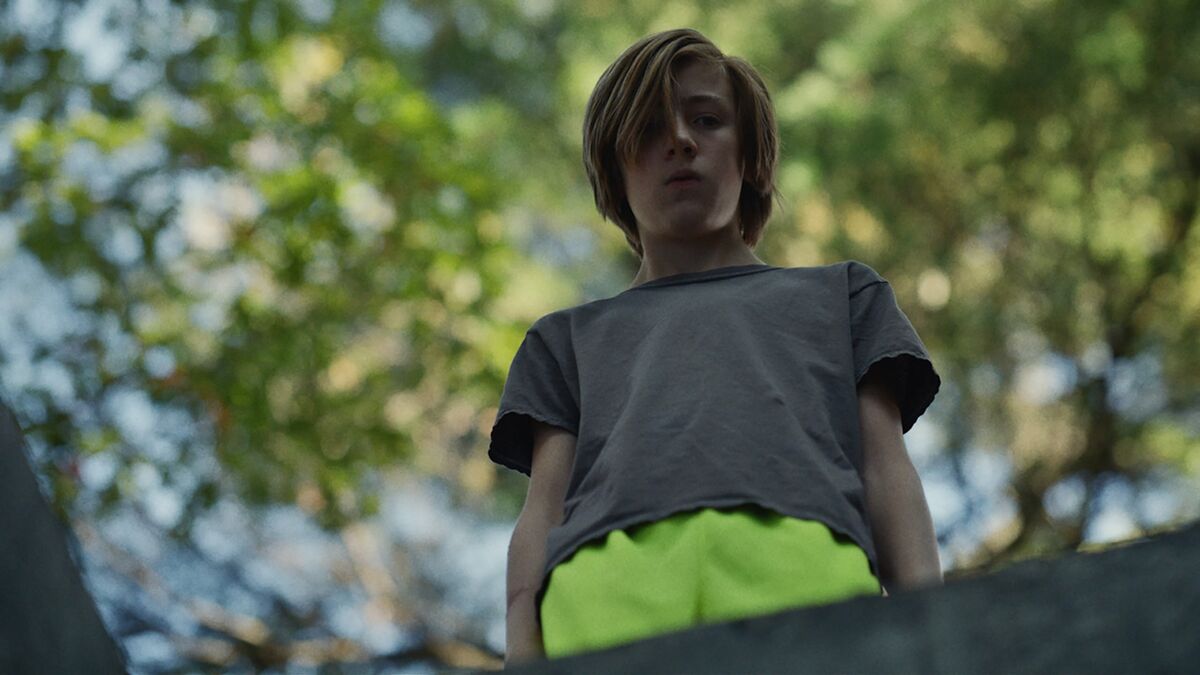‘John and the Hole’ is a compelling case study of films with open endings

John and the Hole might not be the most popular film to have released in the last few years, but it was one of the most sought-after movies at the 2021 Sundance Film Festival.
Pascual Sisto’s directorial debut is a twisted coming-of-age psychological thriller, starring Dexter star Michael C. Hall, Jennifer Ehle, Taissa Farmiga, and Charlie Shotwell in leading roles. The film has a dark ending, which has the potential to leave viewers confused and searching for answers, and this article breaks it down for their ease.
The chilling plot follows John, a 13-year-old boy who, after discovering a deep hole near his house, decides to drug his family and move them to the bottom of the hole. He does so to experience adulthood and to live a life without authority, leaving his family to fend for themselves without food and shelter in the process.
In a very anti-climatic ending, John drops a ladder in the hole without letting his family know that he is on the other end. They arrive home only to see their son floating in the pool face-down, pretending to drown. There is no word of the trio getting trapped in the hole, and the parents don’t question John about his whereabouts, and the movie ends with the family enjoying their dinner in silence. The bunker, where John had trapped the family, is shown to be being filled with sand at the end.
John and the Hole remains a mystifying case study in movies with an open ending, as it chooses to not answer most of the questions it poses. In an interview with MEL magazine, Sisto revealed his intentions of knowingly leaving the movie so open-ended, allowing the audiences to place things together as per their understanding, while also shedding light on the dinner scene, which appears both at the start and at the end of the film:
The first time we see the image, it’s like an archetypal family having dinner — there’s nothing to it. But when we see that last image at the end — with everything that happens, and the silence, and the fact that they’re not dealing with it, and the fact that they’re moving on with their lives — it’s so much more loaded. Psychologically, all the characters have changed radically and they’re completely different people. But outwardly, they feel and behave the same way.
Pascual Sisto/MEL Magazine
The movie also features a character named Lily in a parallel setting, who is shown to be roughly of the same age as John. Lily asks her mother, Gloria, to tell her the story of John, prompting viewers to think that his story is just a fable in the girl’s universe. At the end of the film, Gloria tells Lily that she is leaving her with a year’s worth of allowance, after which she will be on her own.
The movie’s message is likely to point out the income disparity between Lily and John’s families and how both sets of parents react differently towards their children. While John commits a serious act that could have led to his family’s death and still gets away with it without any repercussions, while Lily gets abandoned despite being an obedient child. John also belongs to an affluent family that agrees to all his whims and fancies, while Lily is brought up on limited resources.
Have a tip we should know? [email protected]
